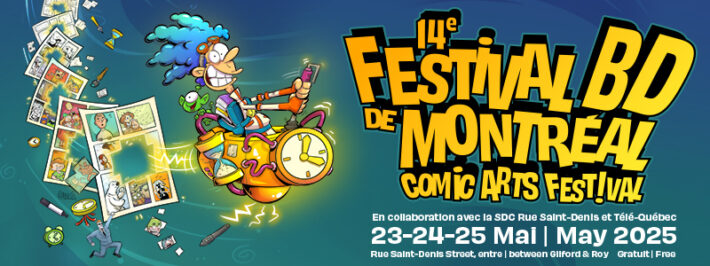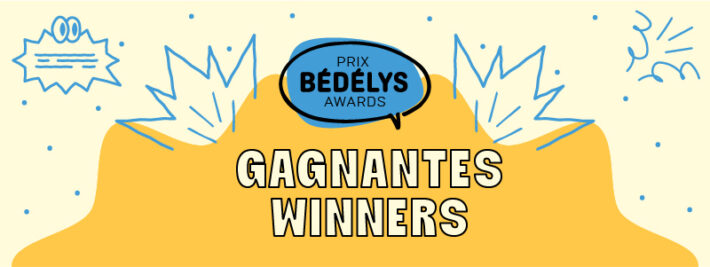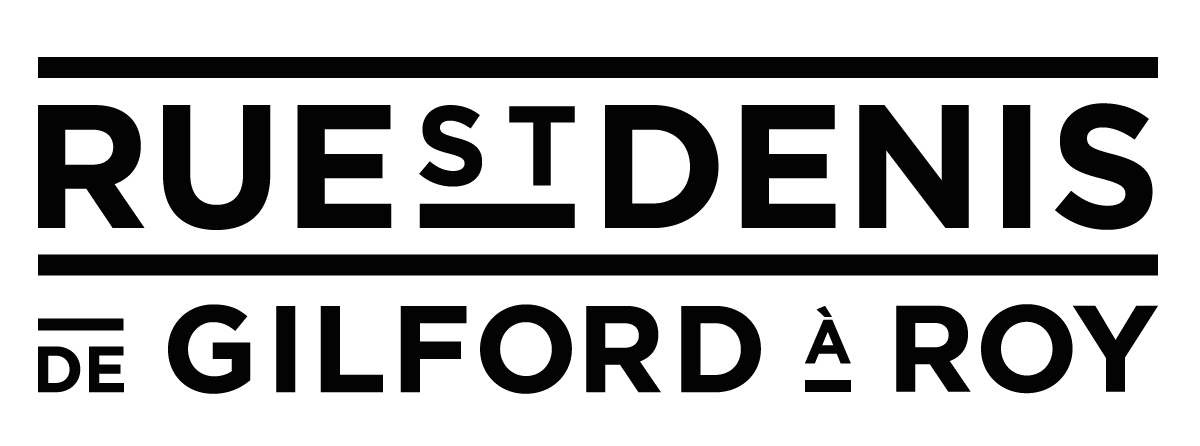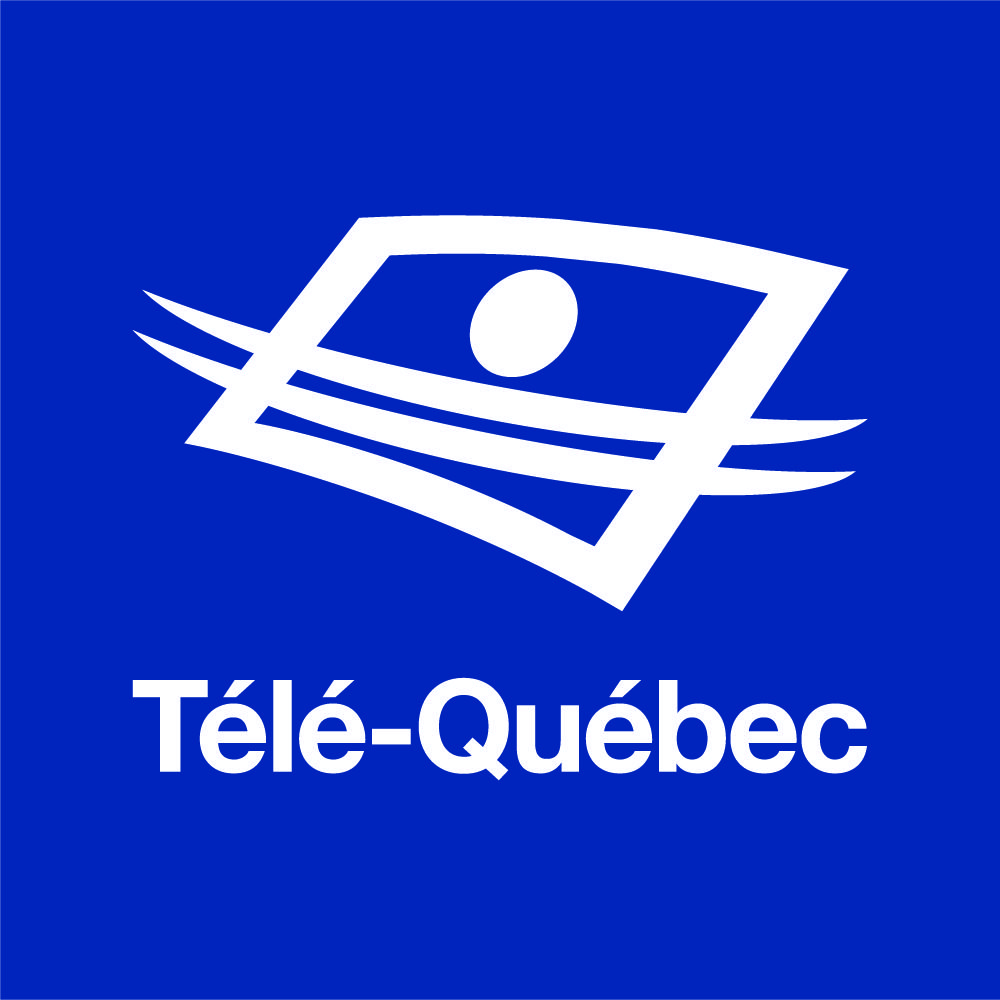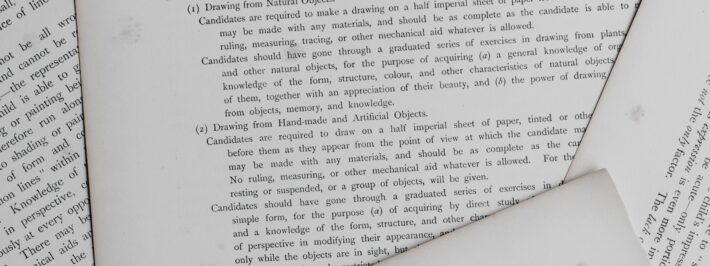
Call for Papers – Comic Arts Conference
Beyond Borders
2e Colloque international du FBDM
The Montreal Comic Arts Festival (MCAF) and the McGill Centre for Interdisciplinary Research on Montreal (CIRM) are pleased to invite you to its 2nd Comic Arts International Conference, Beyond Borders, in Montreal, from October 19 to 21, 2023. This conference will bring together researchers interested in the comic arts and their creators for discussions and presentations of research and field work. The scientific direction of the conference is assured by Anna Giaufret, assistant professor at the Department of Modern Languages and Cultures of the University of Genoa; she is supported by a multidisciplinary scientific committee of researchers and practitioners of the 9th art.
Beyond Borders
Whether political, geographical, social, linguistic, cultural, graphic, metaphorical, real or imaginary, borders are drawn and apprehended in many ways by comic artists. They can be crossed, surpassed or be the place of expectation and political limbo (think of Guy Delisle’s various Chroniques, or Natasha Donovan’s recent adaptation of Thomas King’s story, Borders). Whether impenetrable or porous, borders are also accompanied by various social and cultural phenomena, whether they be migratory movements (Shaun Tan’s Là où vont nos pères, Khiêm. Terres maternelles by Yasmine and Djibril Morisette-Phan, or Threads: From the Refugee Crisis by Kate Evans), or a claim by peoples to a territory and the traditions attached to it (Paying the Land by Joe Sacco). In what ways do these borders shape the territory? What are the social and cultural impacts of this assertion of territoriality?
On the other hand, graphic boundaries (those of the panel, the outline, or the gutter for example) can be used as generative constraints, as with Lewis Trondheim, or disrupted, even eliminated, as in Brecht Evens’ work. How do authors play with these graphic boundaries? How is it possible to exploit them in order to produce meaning? Indeed, the division of the page and the double page, which makes it possible to project the diachrony (narrative development) on the synchronicity (global perception on behalf of the reader) is one of the assets of the 9th art, which constitutes one of its specificities. In these albums – whether personal or collective – by what mechanisms can their creators blur other types of borders: reality and fiction, or even the delimitations of the medium? Because if borders can be constraining, limits drawn on the page, they can also be a call to go beyond them, to explore and to highlight their porosity.
In what ways do comic artists cross the boundaries of comics? Proposals for papers for this second international conference on comics may respond to one or more of the following key themes:
Crossing borders
Physical borders, by their presence, differentiate what they separate, whether they are in place for political, territorial, geographic or other reasons. Crossing them presupposes a change of state, but what are the effects of mobility on the welcoming land? What do we leave behind when we cross a border, and what do we pass on as a result of this crossing? Numerous works of comics address these questions through the prism of migratory movements (L’année du lièvre by Tian, La bolla di Ventimiglia by Emanuele Giacopetti, When Stars Are Scattered by Victoria Jamieson and Omar Mohamed), cultural transmission (Rita sauvée des eaux by Sophie Legoubin-Caupeil and Alice Charbin, The Roles We Play by Sabba Kahn, I Was Their American Dream by Malaka Gharib), or the analysis of the border city (De l’autre côté de la frontière by Jean-Luc Fromental and Philippe Berthet, Juarez by Nathalie Sergeef and Corentin Rouge, Safe Area Gorazde by Joe Sacco).
Between borders
A border, both physical and metaphorical, implies that it constitutes a threshold, between two states, two places, two moments. This border which splits is generating uncertainty, as rich in meaning as any other certainty. Comic book artists explore this aspect of liminality through both graphic and narrative techniques, blurring the more traditional perceptions of the medium, still mistakenly considered to be bordering illustration and literature. The narratives of mixity – identitarian, cultural or societal – are also rich subjects for comic artists (e.g., Marjane Satrapi’s Persepolis, Riad Sattouf’s L’arabe du futur, Trung Le Nguyen’s The Magic Fish, Turba. Memorias de Malvinas by Lauri Fernández).
Transcending borders
The medium of comics sometimes transcends geographical or cultural borders, as in the case of the international success of manga, or the numerous translations that give access to stories from other cultures. Comic books are also adapted to other mediums, or are inspired by them to tell stories with universal potential. Also through the absence or the explosion of graphic boundaries, the mixing of genres or the plurality of formats, comics sometimes play with the codes established by the short history of the medium (Here by Richard McGuire, Time Zone J by Julie Doucet, Red: A Haida Manga by Michael Nicoll Yahgulanaas, On a Sunbeam by Tillie Walden, Vil et misérable by Samuel Cantin, Tear Along the Dotted Line by Zerocalcare).
Call for Papers
We invite anyone interested in participating in this second international conference to submit a paper presentation—in French or English. Your proposal must be submitted by email to: colloquebd@fbdm-mcaf.ca. The submission deadline is May 28, 2023.
Abstracts should not be longer than 500 words, excluding references, and should be accompanied by a biographical note (150 words maximum) specifying the contributor’s name and affiliation. It is also important to indicate the preferred mode of participation in the conference: in person or virtual.
The presentations should be of approximately 20 minutes in length. A question period will follow the presentations. Presentations could be published in the conference proceedings. Finally, although Beyond Borders will be presented in bimodal mode, its organizers encourage participants to contribute to the conference’s exchanges through their physical presence, at the Esplanade Tranquille, in Montreal.
Important Dates
May 28, 2023 Submission Deadline
June 19, 2023 Selected Presenters Notified
June 26, 2023 Confirmation of Participation
October 19–21, 2023 Beyond Borders– 2nd MCAF Conference
About Us
Scientific Director
Anna Giaufret, Department of Modern Languages and Cultures, University of Genoa
The Montreal Comic Arts Festival
Over the last 10 years, MCAF has served as a space for artists and their audiences to meet and exchange ideas. The MCAF’s yearly springtime event serves to promote Québécois and Canadian comic arts on the local and international levels, while contributing to their development and dissemination of knowledge on comics.
Centre for Interdisciplinary Research on Montreal
Bringing together 70 researchers from over 15 universities in Montreal, Canada, and abroad, CIRM is at the forefront of interdisciplinary research about Montreal. The centre also contributes to the conception, coordination, and dissemination of research-action projects created in tandem with social, economic, cultural, community, and municipal actors in the city.
Organizing Committee
Mélanie La Roche, General Director, MCAF
Virginie Mont-Reynaud, Programming Director, MCAF
Audray Fontaine, Knowledge Mobilization Coordinator, CIRM
Johanne Desrochers, MCAF’s General Director 2014-2022, MCAF
Maude Bourassa-Francoeur, Project Manager – Cultural Mediation, MCAF
Contact
For information concerning the submission of presentation proposals and the conference, please contact the organizing committee of the event at the following email address: colloquebd@fbdm-mcaf.ca
Short Bibliography
Baetens, Jan, et Hugo Frey (2014), The Graphic Novel : An Introduction, Cambridge University Press, Kindle Edition.
Dardaillon, Sylvie, et Christophe Meunier (2013), « La série Paul de Michel Rabagliati : récits d’espaces et de temps », Comicalités, « Représenter l’auteur de bandes dessinées », https://journals.openedition.org/comicalites/1566.
Fontaine-Rousseau, Alexandre (2015), « Pour une politique de l’espace », Sentinelle, n° 1, p. 53-55.
Giaufret, Anna (2016), « Les jeunes auteures francophones de bandes dessinées à Montréal : pratiques, réseaux, représentations », Alternative francophone, https://ejournals.library.ualberta.ca/index.php/af/issue/view/1739/showToc.
Giaufret, Anna (2021), Montréal dans les bulles. Représentation de l’espace urbain et du français parlé montréalais dans la bande dessinée, Sainte-Foy, Presses de l’Université Laval.
Groensteen, Thierry (2011), Bande dessinée et narration : système de la bande dessinée, 2, Paris, PUF.
Hatfield, Charles (2005), Alternative Comics : An Emerging Literature, Jackson, University Press of Mississippi.
Lemay, Sylvain (2016), Du chiendent dans le printemps, Montréal, Éditions Mém9ire.
Peeters, Benoît (2002), Lire la bande dessinée, Paris, Flammarion.
Viau, Michel (2021), BDQ : Histoire de la bande dessinée au Québec.1. Les pionniers de la bulle : des origines à 1968, Montréal : Station T, 2021.
Viau, Michel (2021), BDQ : Histoire de la bande dessinée au Québec. 2. Le printemps de la bande dessinée québécoise : de 1968 à 1979, Montréal : Station T, 2022.
Voix et images, n° 128, hiver 2018 : « La bande dessinée québécoise ».

